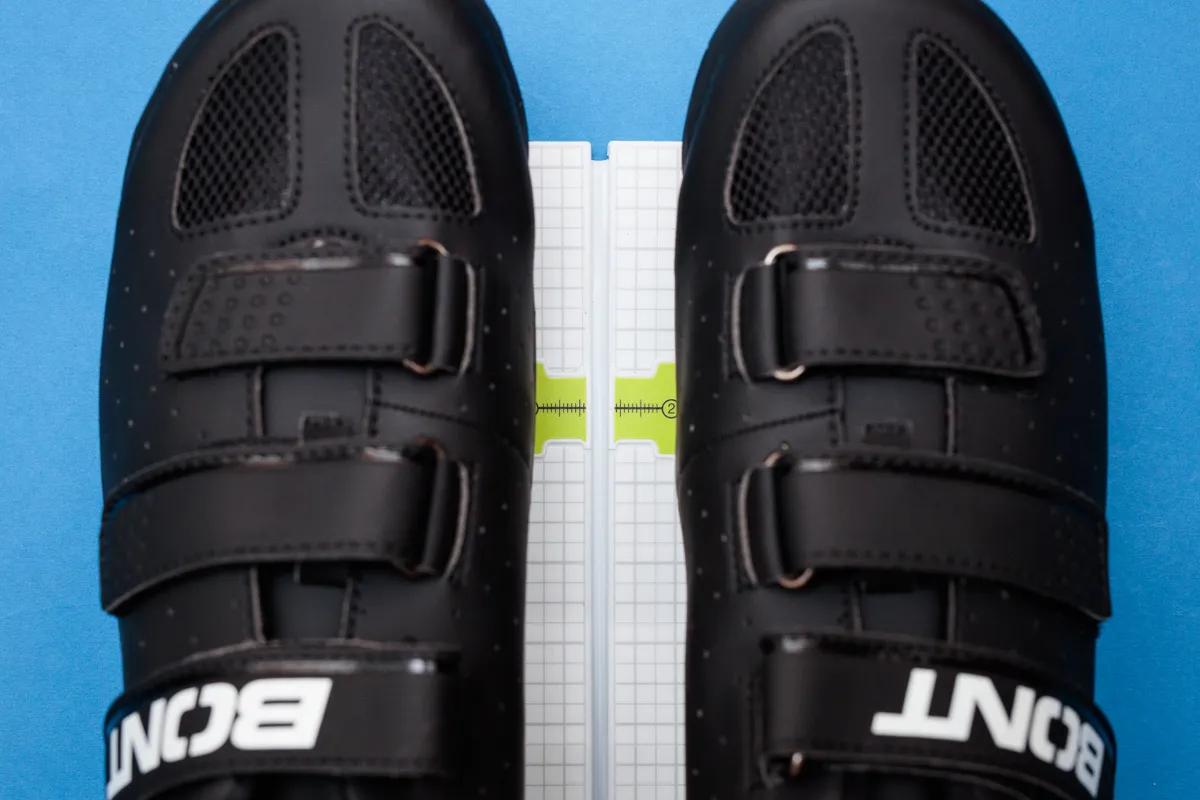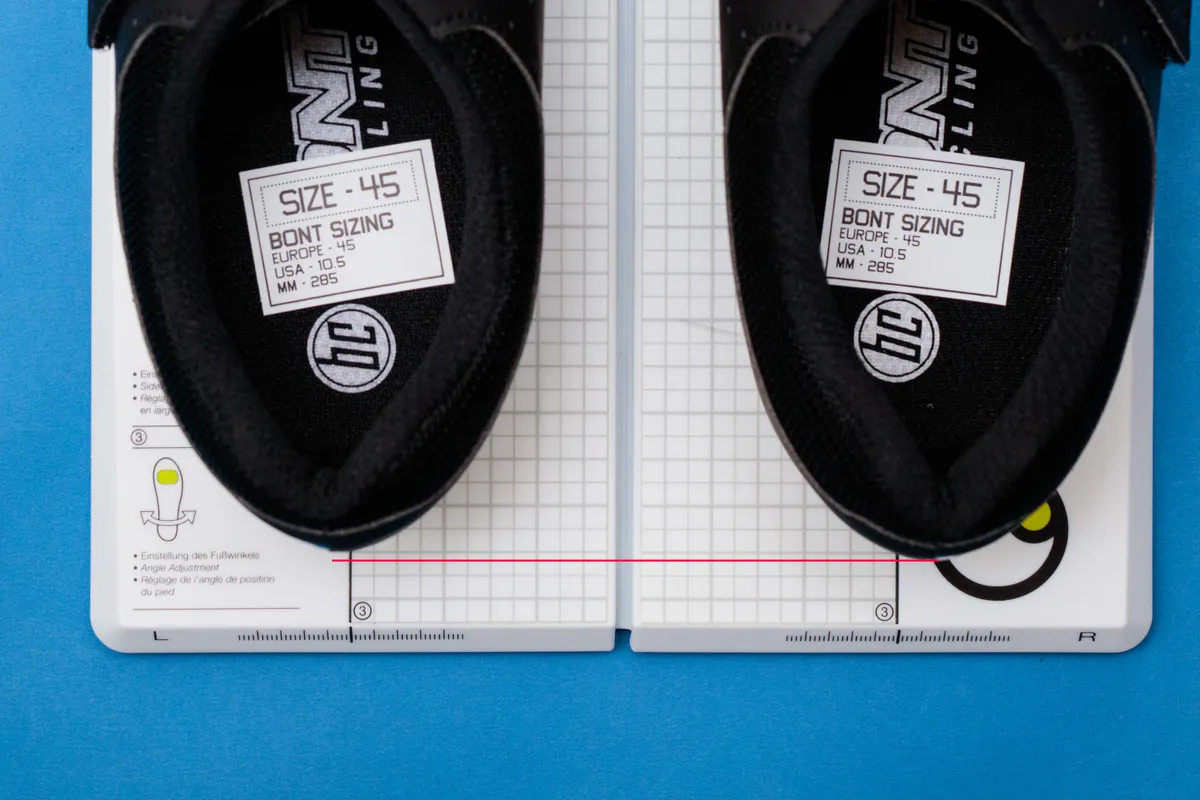The Motion is the cheapest road cycling shoe in Bont’s range.
Using anti-stretch microfibre uppers and a fibreglass sole, the Motion brings Bont’s signature super-stiff sole and anatomical last to an accessible price point.
To reduce cost, the Motions get Velcro straps instead of rotary dials or ratchet systems and forgo the heat-mouldable qualities of Bont’s more expensive offerings.
In use, though, it’s impressive how much of the classic Bont cycling shoe character is retained at this price point.
Bont Motion fit and spec details
It’s important an entry-level cycling shoe can do the basics well, and the Motions tick practically all the right boxes.
The fit is generously wide by cycling shoe standards, as per Bont’s philosophy that cycling shoes should be “anatomically correct” (meaning shaped like an actual foot).
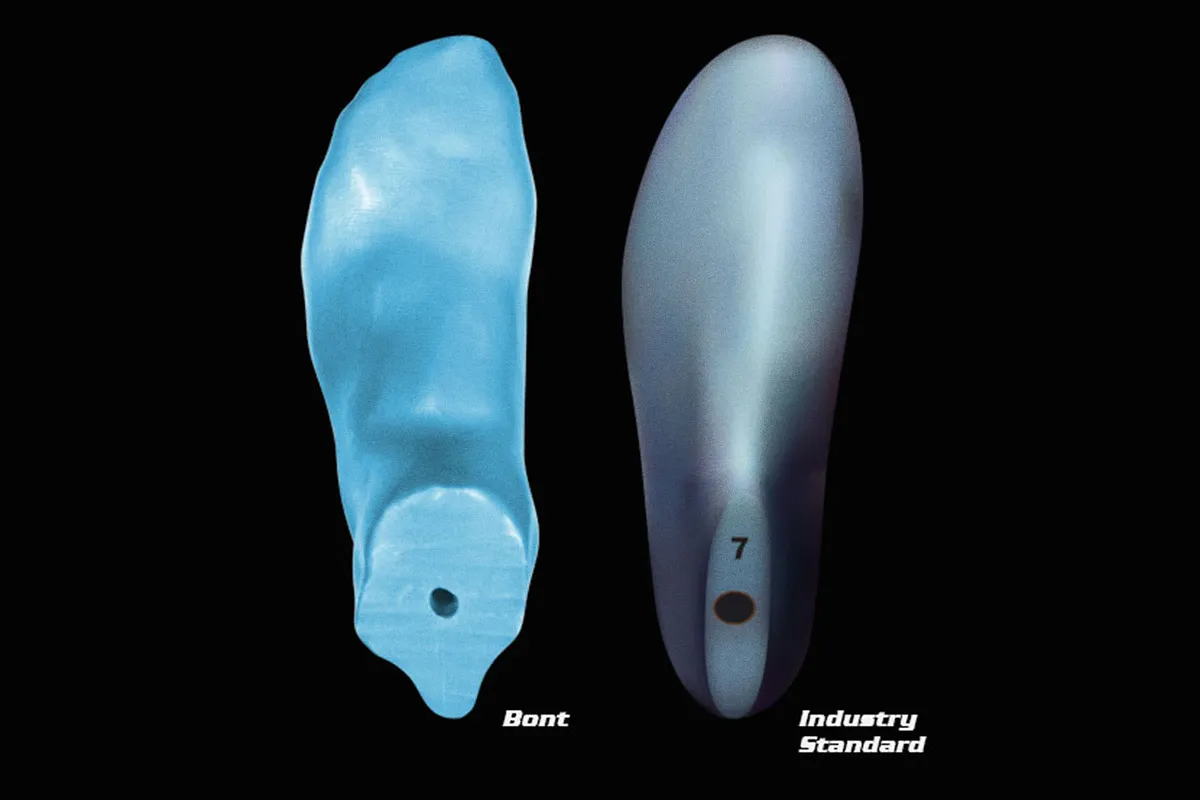
This can make Bonts look a little less sleek than your average road cycling shoe, but a lower risk of cramped feet is a more than fair trade-off.
While there are now multiple cycling shoes with dial-based closure systems for under £100, such as the Specialized Torch 1.0, Boardman Carbon Cycle Shoes and Shimano RC3W, the Motions get three Velcro straps per shoe.
Though not quite as easily fine-tunable as rotary dials from the likes of Boa, Velcro straps are a durable, low-tech solution, which work almost as well in practice.
That said, I do think Velcro straps look a bit cheap and outdated.
If rotary dials cost too much, I think laces are a more elegant choice than Velcro straps, even if they prevent on-the-fly adjustments. It’s fair to say laces aren’t everyone’s cup of tea, either, however.
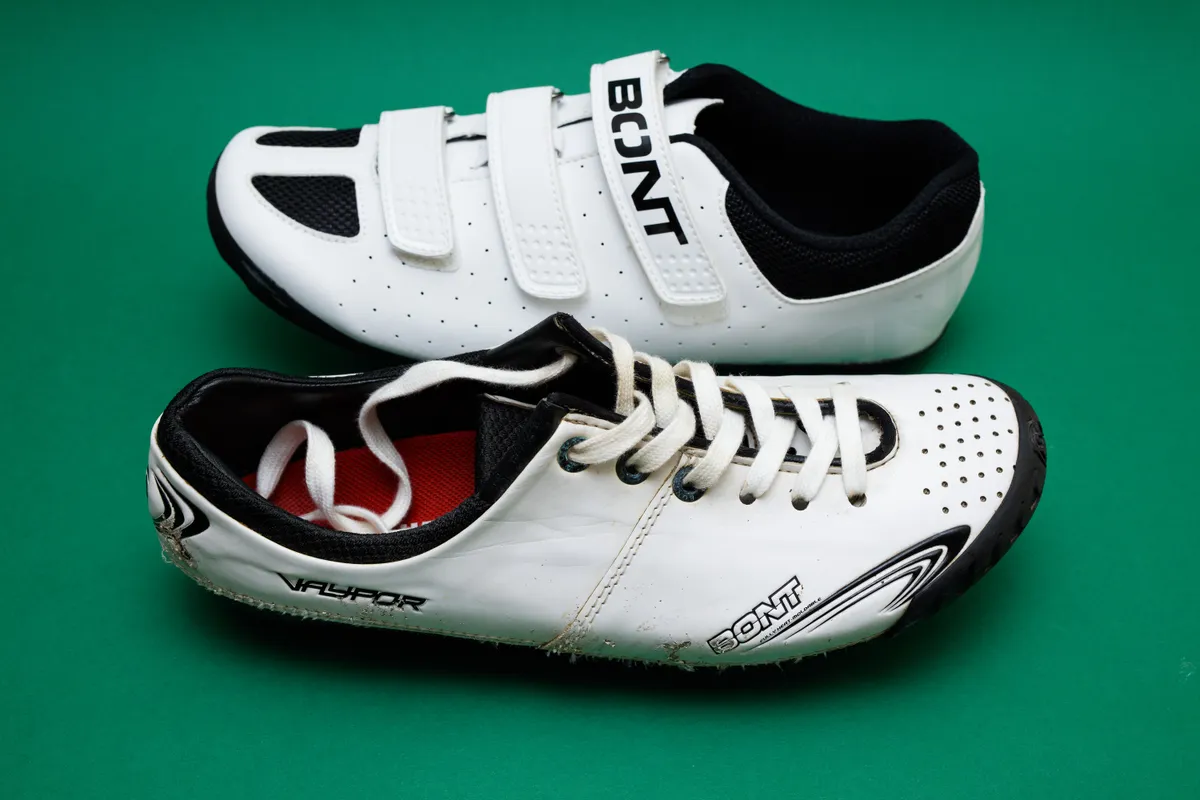
The only area in which the Motions objectively lag behind the competition is in terms of weight.
At 675g for a pair of size EU45s, they’re around 135g heavier than a set of Shimano’s similarly priced RC3 cycling shoes (which weigh around 540g for a pair of EU45s, according to the internet).
It’s not something you’ll notice while riding, though, even if budget-conscious weight weenies might be disappointed.
Bont Motion soles and stiffness
To put it plainly, the Motion’s fibreglass soles are incredibly stiff for a cycling shoe at this price point – stiffer than any other entry- to mid-level road cycling shoe I’ve used.
They’re not quite up there with the likes of Bont’s own carbon-soled Vaypor S or Zero+, but those cost over three and four times as much respectively, so that’s to be expected.
The relatively high weight of the Motions, compared to similarly priced competitors, can likely be attributed to the stoutness of the soles. There are inevitably some compromises at this price point, after all.
Fibreglass is cheaper, but it supposedly has a strength-to-weight ratio around half that of carbon fibre, meaning you need more of it to achieve a similar stiffness.
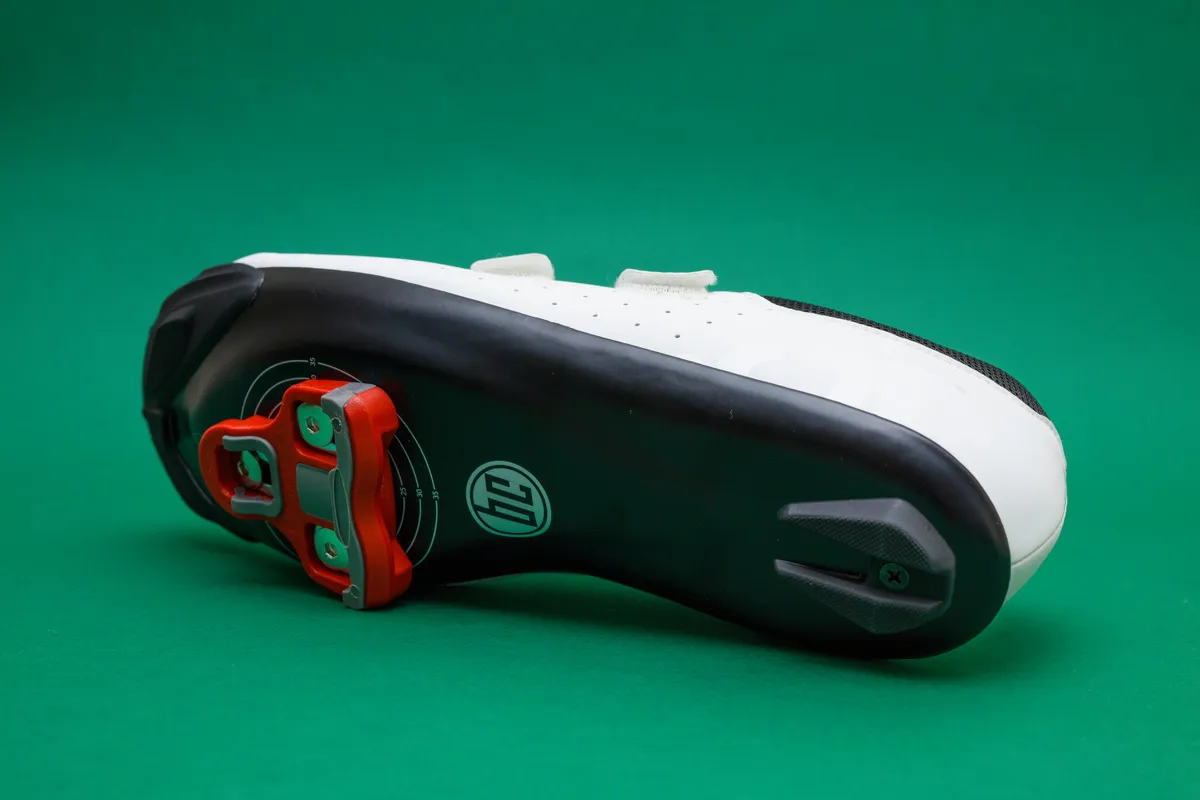
Of course, how much cycling shoe stiffness actually matters is debatable. Objectively, there’s not much evidence that it does matter hugely.
Subjectively, however, I prefer stiff cycling shoes. In my experience, such shoes are actually more comfortable, providing they fit you well.
Not everyone will agree, though, and (a bit like with road bike saddles) it’s hard to know what you might like without trying it yourself.
As already mentioned, unlike with Bont’s more expensive models, the Motions aren’t heat-mouldable, and therein lies a potential problem.
Very stiff soles can amplify the effects of any fit issues, but with the heat-mouldable models you have scope to change things. Here, though, you’re stuck with the fit as it comes, for better or worse.
While I didn’t experience any issues with the fit out of the box, I’d nevertheless be minded to spend the extra £20 for the Bont Riot Buckle, which is heat-mouldable.
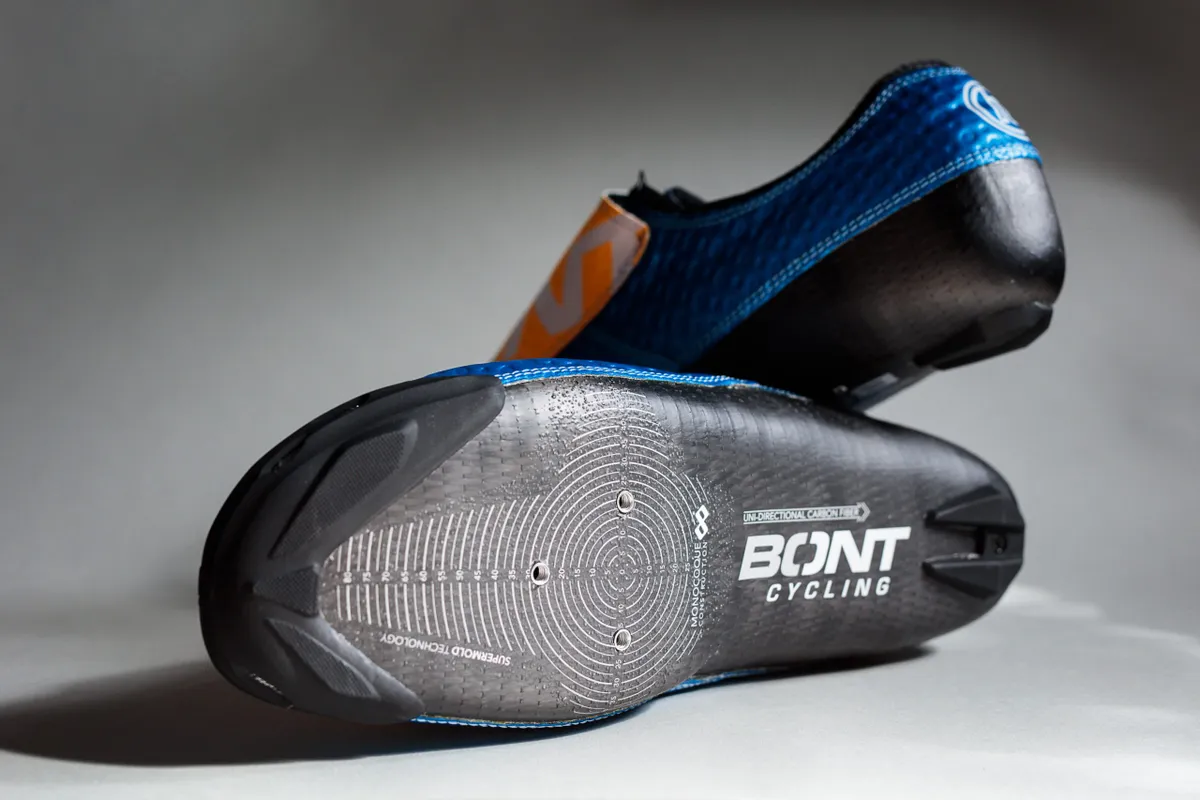
Beyond supreme stiffness, the soles have a standard 3-bolt pattern for Look Keo and Shimano SPD-SL cleats. Adaptor plates to enable the use of 2-bolt SPD cleats are also available separately for €12.50.
As someone who likes to run their cleats fairly rearward, I also appreciate the cleat bolt holes have some built-in fore and aft adjustment range, as that’s a relatively rare feature at this price point.
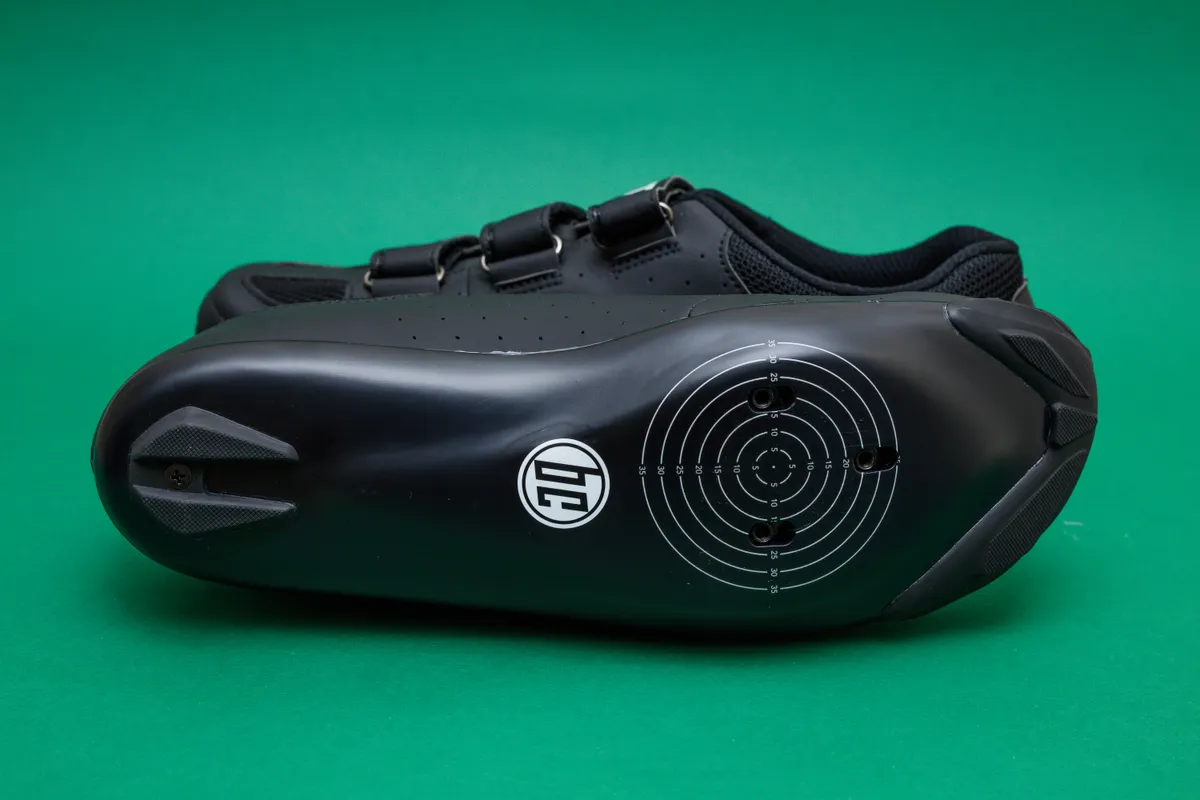
Bont Motion colour options
The Motions are available in two colours, white or black. Not exciting choices, but nothing divisive, either.
Bont sent me a pair of each colour, and it was the black pair I pulled out of the box first.
Attempting to fit cleats using an Ergon TP1 pedal cleat tool, however, immediately presented a problem; the cleat bolt holes weren’t in an identical position across the left and right shoes, meaning I wasn’t able to place the cleats in exactly the same place on each shoe.
Fortunately, the white pair didn’t have this issue and I was able to set up the cleats and go about my testing as normal.
Given I’ve had a number of pairs of Bont cycling shoes over the years, though, all without any similar issues, I’m confident this is likely an isolated incident rather than something symptomatic of a wider issue.
In any case, Bont says any customer experiencing a similar problem would be able to make a warranty claim for a replacement set via their point of purchase.
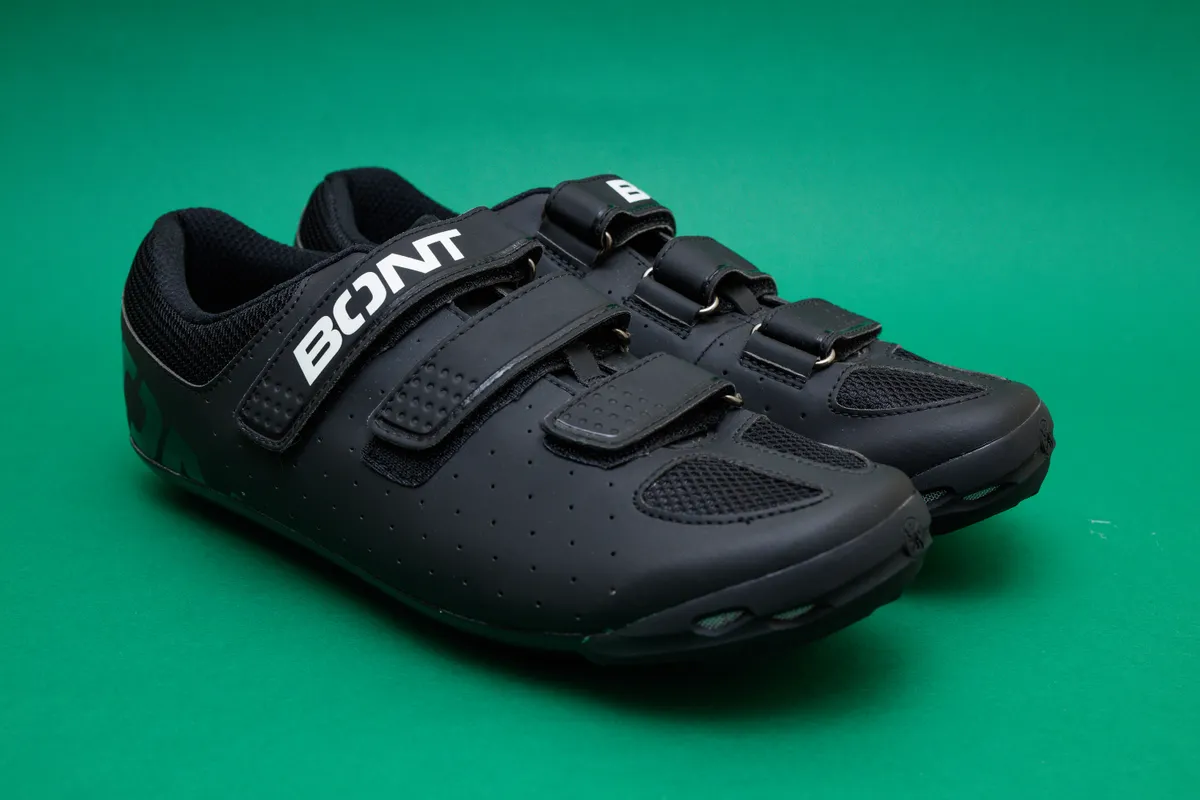
Bont Motion bottom line
Assuming you get a set without any issues, the Bont Motions offer a lot of cycling shoe for the money.
While they’re a bit heavier than the competition, it’s hard to fault their performance in use.
If you’re in the market for a set of stiff-soled cycling shoes, there’s arguably nothing better at this price point.
Product
| Brand | Bont |
| Price | £80.00, $89.95 |
| Weight | 675g |
Features
| Winter-specific | no |
| Triathlon/TT-specific | no |
| Shoe closure | velcro |
| Cleat fitting | 3_bolt_look_type |
| Cleat fitting | keo |
| Cleat fitting | spd_sl |
| Sole | Fibreglass |

